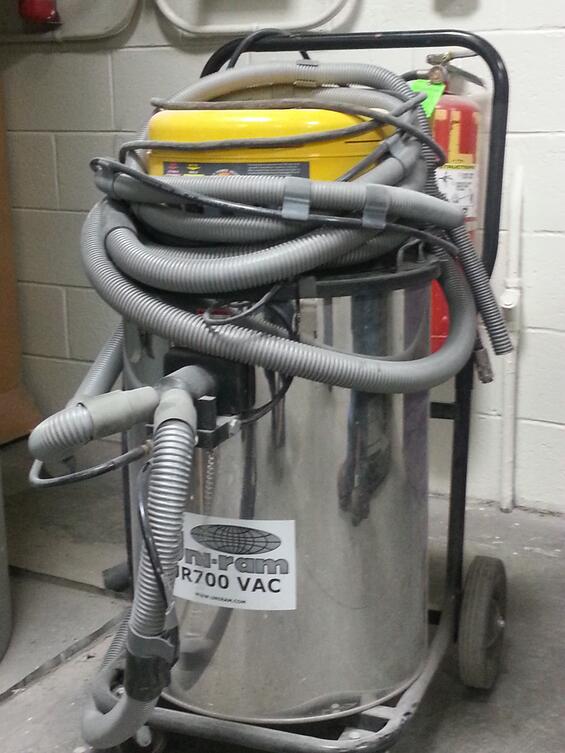Download this Fact Sheet as a PDF
Download the MassCAR Vacuum Sanding Fact Sheet.
The Benefits
Increase Worker Safety
Vacuum sanders remove dust from the air that may contain isocyanates (found in all clear coats), lead, chromium, silica, and other harmful substances. These toxics can damage the lungs and nervous system and cause permanent sensitization, triggering work-related asthma. Even when using a vacuum sander, it is very important that workers were N-95 NIOSH approved masks to protect their lungs.
Reduce Cleanup Costs
Vacuum sanders prevent dust from settling throughout the shop, reducing the number of labor hours that would otherwise be needed to clean it up. Shops have reported that vacuum sanders can pay for themselves in about a year due to reduced cleanup costs alone.
Better Paint Jobs
Vacuum sanders prevent dust from landing on and ruining fresh paint jobs. They also help reduce the amount of buffing or reworking that needs to be done in these cases.
Easier Waste Collection
You have no way of knowing what kind of toxic chemicals were in the original paint of the cars that roll into your garage. Paints can contain substances such as lead, cadmium and hexavalent chromium. Therefore, it is important to dispose of all sanding waste as hazardous waste. Using a vacuum sander takes the chemicals out of the air, making it a safer and cleaner working environment, and deposits it directly into the vacuum. Collecting it in a vacuum makes it easier to dispose of as hazardous waste.
Reduce Spending on Sandpaper
It has been reported that sandpaper in vacuum sanders needs to be replaced less frequently than sandpaper in conventional disc sanders. One facility reports that while using a vacuum sander, their sandpaper lasts 30 - 40 percent longer. Because the sandpaper is not as clogged with dust there are fewer “sanding swirls” left on the surface, resulting in a smoother and better paint job.

This portable vacuum sander has two adjustable arms that allow for two workers to sand simultaneously.
Take the Next Step
Talk to Your Supplier
Ask your supplier for suggestions of brands or types of vacuum sanders based on your shop’s configuration.
Determine What Type of Vacuum Sander Will Work Best for Your Shop
Decide whether the central vacuum system or portable vacuum sanders are a better fit for your shop. If sanding occurs all over the shop, portable vacuum sanders may be best suited to the workspace. If sanding generally occurs in a few areas, it may be easier to install a central system with a few flexible hosing drops. This will make it easier for your workers to use the sanders.
Involve Paint Technicians in the Decisions
Experienced paint technicians may not be eager to switch from conventional sanders to vacuum sanders. Shop owners should be sensitive to this perspective while emphasizing the significant benefits of this practice. OTA has interviewed numerous paint technicians who use vacuum sanders, and they unanimously agree that this technology is superior to the conventional sanders.
Get a Reference
Talk to another shop owner that uses a vacuum sander. If you do not know any, contact OTA (617-626-1060) and ask for a reference.
Safety Information
Wear Proper Protective Equipment
Look into goggles with side shields, gloves, and N-95 NIOSH approved respirators, or better. If not using a vacuum sander, dust in your shop will exceed OSHA Permissible Exposure Limits (PEL) protective equipment will be required. Using a vacuum sander will reduce the likelihood of particulate levels exceeding OSHA’s PEL.
See the “Spray Painting Regulations” fact sheet for more information on the OSHA regulations for respirators.
Find Additional Information
- The California Department of Toxic Substances Control’s Sanding Waste Management fact sheet discusses best practices to protect worker and the environment, as well making sure to dispose of sanding waste as hazardous waste.
- The EPA’s Vacuum Sanders: Reducing Dust and Hazardous Air Pollutants fact sheet includes information about benefits, cost, and implementation.
Success Stories
“We purchased some portable vacuum sanders to keep the dust out of the air, making the shop cleaner and keeping our workers safer. Without the vacuum sanders, our workers would be covered in dust and contaminate the air throughout the shop.”
“We purchased a portable vacuum sander, which has done a fantastic job keeping the dust out of the air. Additionally, the sanding pads last noticeably longer when used with a vacuum sander compared to a traditional sander, which is certainly a money saver. More recently, we started purchasing mesh sanding pads, which have performed great.”
Contact
Phone
You will be connected to the person who can best answer your questions.